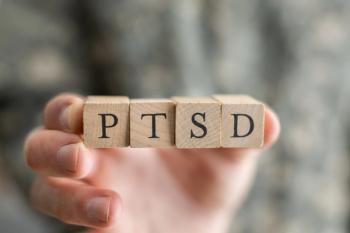
Stress and Anxiety Disorders Research Roundup: May 10, 2024
What is new in research on stress and anxiety disorders?
In this Research Roundup, we explore new studies on stress and anxiety disorders, their symptomology, potential interventions, and connections to trauma.
Positive and Negative Affect in Generalized Anxiety Disorder
This ecological momentary assessment study explored positive affect (PA) and negative affect (NA) in depressive and anxiety symptoms in generalized anxiety disorder (GAD). In it, the investigators found that NA and PA intensity, as well as NA instability, were predictive of elevated depressive and GAD symptoms. Models including NA instability alongside PA and NA intensity provided the best prediction for both depression and GAD. Other emotion dynamic indices such as affective inertia, differentiation, and PA instability were not associated with depressive and GAD symptoms.
“In addition to the mean levels of affect, it is important to study other emotion dynamic indices such as NA instability, as these offer a more nuanced view of underlying emotion dysregulation processes,” the investigators concluded. “This could, in the long term, help tailor more specific prevention and intervention methods for mood and anxiety disorders.”
Reference
Sultson H, Murd C, Havik M, Konstabel K.
Amygdala-Mediated Anxiety and Posttraumatic Stress After Adult Trauma
This study investigated whether the resting-state functional connectivity of the amygdala mediates the relationship between childhood abuse and anxiety and posttraumatic stress disorder (PTSD) symptoms in adults following trauma exposure. Results showed that childhood abuse correlated with increased amygdala connectivity with the precuneus, and this connectivity mediated the association between childhood abuse and anxiety symptoms posttrauma. However, this mediation effect was not observed for PTSD symptoms, suggesting a specific role of amygdala-precuneus connectivity in understanding the link between childhood abuse and adult anxiety following trauma.
The investigators concluded that, “Findings suggest that childhood abuse may contribute to longstanding upregulation of attentional vigilance circuits, which makes one vulnerable to anxiety-related symptoms in adulthood.
Reference
Harb F, Liuzzi MT, Huggins AA, et al.
Effectiveness of Short-Term Psychotherapy for Treatment of Alexithymia in Generalized Anxiety Disorder
This case report outlines a short-term psychotherapy approach targeting alexithymia in a patient with generalized anxiety disorder (GAD). The therapy, spanning 3 weekly sessions, focused on enhancing emotional awareness, labeling emotions, and managing emotional experiences. Evaluation using standardized scales revealed reductions in alexithymia, anxiety, and depression post-intervention, indicating the effectiveness of the treatment in improving emotional processing and overall mental health outcomes for the patient.
The investigators concluded that, “The results suggested that the treatment was not only effective in reducing alexithymia helping the patient to clarify, identify, and describe her feelings, but also effective in reducing anxiety and depression.”
Reference
Wang Y, Cao J, Wei J.
Note: This Research Roundup was prepared with the assistance of ChatGPT.
Let us hear from you! Our July Special Report will focus on stress and anxiety disorders. Want to share your insights with colleagues on the latest research on stress and anxiety disorders for potential inclusion in the Special Report? Write to us at
Newsletter
Receive trusted psychiatric news, expert analysis, and clinical insights — subscribe today to support your practice and your patients.













